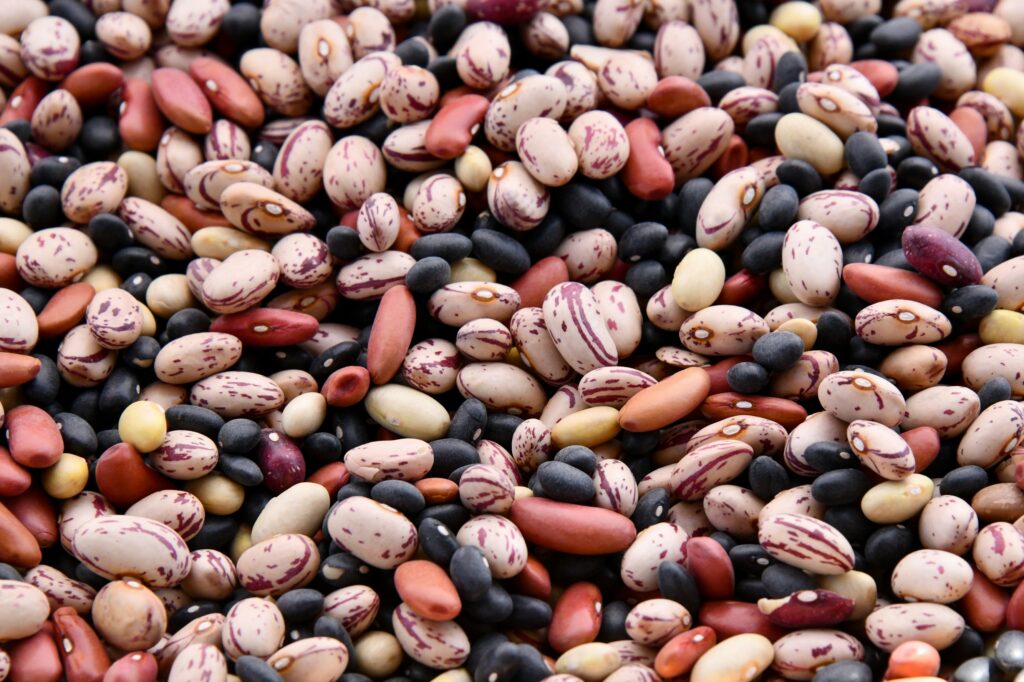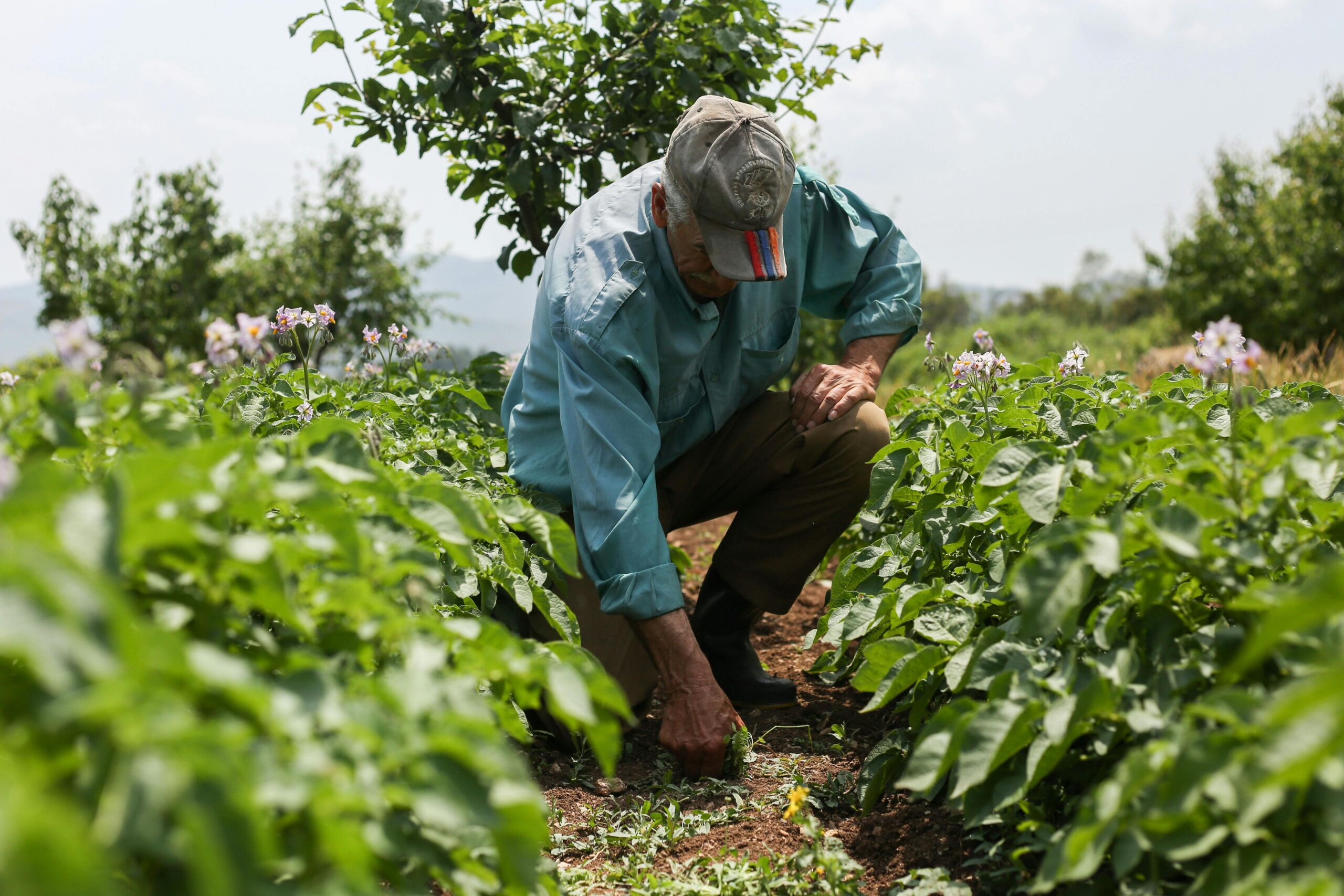Executive summary
Consumer preferences are shifting towards sustainable, alternative proteins, presenting farmers with new opportunities. Despite challenges in traditional animal agriculture, the alternative protein market shows significant growth potential. This article explores strategies for farmers to tap into this market, including accessing new markets, forging collaborations, and optimizing value chains. While challenges such as financing and market agreements exist, actionable insights are provided to help farmers thrive in the alternative protein industry.
Supporting farmers to future-proof their business
Around the world, consumer food preferences are undergoing a significant shift. The last few years have seen exponential interest in sustainable alternative proteins1– including plant-based, fermentation-enabled, and cultivated ingredients.
Across Europe, an impressive 40% of consumers now identify as flexitarian, pescetarian, vegetarian, or vegan, and are actively reducing their consumption of animal-based products.2 In terms of industry growth, the alternative protein market is estimated to reach USD 30 billion by 2030, expanding at an impressive CAGR of 10.4% between 2024-2030.3 By 2035, some analysts predict that alt-proteins will represent 10-45% of the global protein market, and 25%-50% by 2050.4
Against this backdrop, traditional animal agriculture is facing several challenges: economic pressures from increasing intensification and consolidation,5 climate change, and reduced consumer demand for conventional animal-based products. Farms file for bankruptcy daily, driven to collapse by flawed subsidy systems and competition from intensive, feedlot-driven megafarms.6 Between 2003 and 2019, for example, the number of dairy farms in the US plummeted by 50%.7

In contrast, opportunities for farmers in the alternative protein industry are abundant and diverse, reflecting the growing demand for sustainable food options and innovation in this sector. Alternative proteins not only open up new markets but offer farmers a future that is more sustainable, financially viable, and resilient.
Throughout this article, we will share the key opportunities available and empower farmers to future-proof their businesses with actionable insights.
“There’s a fast-growing market for people seeking a vegan or flexitarian diet, who want more plant-based proteins. There’s definitely an opportunity for farmers to get over those cultural and economic barriers because there could be a lucrative opportunity there.”
Opportunities in alternative proteins
Accessing new markets
Farmers can tap into the growing market for alternative proteins, both locally and globally. This includes supplying ingredients to food manufacturers, selling plant-based foods directly to consumers through farmers’ markets or online platforms, or exporting to regions with increasing demand for alternative protein ingredients or products.
Plant-based: Recent surveys show that consumers intend to increase their consumption of plant-based foods in the years ahead. For example, 53% of Europeans intend to increase their consumption of legumes, while 40% intend to consume more plant-based alternatives in the next six months, underscoring the growing acceptance of plant-based options in Europe.
Fungi and fermented proteins: Fungi and fermented proteins are rapidly gaining market share and consumer acceptance.8 Existing farm infrastructure from animal agriculture could be retrofitted with equipment to grow fungi or run fermentation technologies – de-commissioned barns could be used for fungi agriculture. While this would require significant capital expenditure, it also opens up the potential for substantial long-term benefits and profitability within these growing segments.
Cultivated meat and dairy: Cultivated products appeal to a growing segment of consumers concerned about animal welfare, environmental sustainability, and food safety. By getting involved in cellular agriculture, farmers can cater to the preferences of these consumers, thereby expanding their customer base and enhancing their reputation.

How confident can farmers be that there will be continuing market demand for alternative proteins? When it comes to plant-based products, the good news is that they typically require a blend of ingredients to achieve the desired nutritional and taste profiles. This means that farmers have access to a broad global market if growing conditions don’t align with the types of plant protein being demanded by local manufacturers.
“We have a wide range of targets for crops. We have 15 different crops in development that we’re exploring as solutions, including almonds, oats, and beans, and these are promising in terms of protein bases. In the end, we have to fulfill the wishes of the consumer, and in my opinion, future consumers will have a mixture.”
Of course, industry demand is informed by consumer demand, but the indications are extremely positive for plant-based options, with, for example, more than half of households worldwide already buying plant-based milks every week.9 While fungi-based, fermentation-enabled, and cultivated proteins have less mature markets, they are seeing rapid growth. At the start of 2024, Berlin-based company Infinite Roots raised USD 58 million in Europe’s largest mycelium investment.
Collaborations with food and tech companies
Synergistic collaborations can help businesses across the industry to thrive. In this way, farmers can maximize their outputs and achieve greater security through long-term industry partnerships. Businesses should provide long-term contracts and offer a range of partnership options for farmers to help minimize the potential risks of switching to alternative proteins.
Farmer-tech collaborations: Farmers could partner with buyers or cooperatives to co-invest in capital expenditure around precision-fermentation production or other alternative protein technologies, thus partly de-risking the transition.
Ingredient supply: There are numerous opportunities for farmers to supply ingredients for plant-based alternatives – to brands, wholesalers, ingredient merchants, food manufacturers, caterers, or food service venues. Long-term contracts can offer security. And, once cultivated meat becomes more widely regulated, the technology could create demands for new agricultural ingredients, like cells (donor herds for cell harvesting), feedstock for growth media (arable, forage, sugar beet), feedstock for edible scaffolds (cellulose, pea, bean, soy) and current waste streams (glucose, cellulose).10

Partnering with food tech companies: Partnering with food tech start-ups or established companies can offer farmers opportunities to supply ingredients or even co-develop new and value-added products. By aligning with these companies, farmers can access new markets and benefit from the technological advancements in the food industry.
Research and innovation: Participating in research initiatives and innovation hubs focussed on plant-based and fungi agriculture can provide farmers with access to the latest advancements, best practices, and market insights. This includes collaborating with agricultural universities, research institutions, and industry associations to stay at the forefront of the alternative food movement.
Vertical integration and value chain optimisation
To unlock greater revenues from the crops they grow, farmers can consider on-farm processing and value addition. By refining and producing the alternative proteins they grow – thus becoming a food manufacturer as well as a grower – farmers can reap higher profit margins.
“Plant milk is made in a factory, not on a farm. Most of the value chain moves from the farmers to the industry. Farmers fear becoming irrelevant, losing their livelihoods.”
Consumer preferences are also causing a move away from fresh vegetables to processed food, and that usually takes margin away from the farmers. But these changes also represent a huge opportunity. As demand for plant-based alternatives grows, farmers can embrace more of the value chain themselves.
“I wish more farmers were involved in the operation. The asset values that farmers hold is huge. They could own a huge chunk of these operations if they chose to, but they’re standing back and letting middlemen take those benefits. I know a lot of horticultural businesses but they don’t process their vegetables so they’re missing a trick. Processing would be a way to diversify their farm further.”
Value-added products: Farmers can explore value-added opportunities by processing their harvested crops into ingredients for plant-based foods on-farm. This could include producing items like soy protein isolates, pea protein powders, or hemp oil, which are in high demand by food manufacturers producing plant-based meat alternatives, dairy alternatives, and other plant-based products.

Vertical integration: Farmers can consider vertically integrating their operations by processing their crops into finished products. This could involve establishing on-farm processing facilities for making items like tofu, plant-based milks, or ready-to-eat meals, allowing farmers to capture more value from their harvests.
Arable farmers become producers, too – Glebe Farm
In 2020, UK arable farm, Glebe Farm, set up processing facilities on-site to produce gluten-free oat milk, PureOaty, using their oats. Glebe Farm differentiates itself from other farms and producers by focusing on gluten-free products made from its oats. They know this is a value-add for health-conscious consumers, saying: “Since we’re involved in every step of growing, milling, and manufacturing our oats, we know exactly what goes into everything we produce.” 11

Glebe Farm also supplies its gluten-free rolled oats to food manufacturers worldwide. This diversified portfolio helps them to spread their risks while maximizing the potential value they can extract from their crops. This case study is a good example of how farmers can become grower-producers and derive greater margins from their inputs by investing in knowledge and on-site facilities.
“They’ve created a space for themselves – investing in wholesale to change their business. You’ll see their products in village shops and wholesalers. Because they can show their story as a local family farm producing it. A lot of marketplaces like that.”
Short supply chain farming – The VALPRO Path project
A new project in Italy – VALPRO Path – is investigating whether shorter supply chains for the production of plant-based meats could promote plant protein diversity, develop sustainable business opportunities, and add value for farmers.
Co-funded by Horizon Europe and UK Research and Innovation funds, the project aims to direct food chain players to more sustainable plant protein production for food.
Challenges, considerations, and solutions
There are, of course, also challenges that come with switching to alternative proteins. Farmers will need to make various considerations and preparations beforehand to ensure the continued success of their businesses. But with the right knowledge and support, many of these challenges can be overcome.
Sharing knowledge
- Challenges in accessing innovation: Despite their willingness to innovate, farmers face challenges in accessing new knowledge. They require accessible advice and support on adopting new methods, which should be provided free of charge.
- Peer-to-peer learning: Peer-to-peer learning plays a crucial role in disseminating knowledge and fostering innovation within farming communities. Farmers are more receptive to advice from their peers who understand the personal nature of farming.
- Farmer-led solutions: Effective farming solutions should be farmer-led rather than top-down. This underscores the importance of involving farmers in the development and implementation of agricultural innovations.
Financing the transition
- Capital investment as a barrier: Access to capital investment is a major barrier for farmers looking to transition to new technologies and practices, particularly in acquiring the necessary machinery, equipment, and infrastructure.
- Need for affordable finance: Farmers require access to affordable finance to make necessary changes – both public spending and private investment could play a role in providing this finance.
- Direct-to-consumer channels and farm-to-fork initiatives: When it comes to on-farm processing and value addition, farmers will require marketing and distribution channels to get finished products to consumers, which will require both money and time.

- Transition away from subsidies: The transition away from subsidies poses challenges for farmers, particularly smaller operations, and raises questions about how to ensure profitability without subsidies.
- Role of big companies in transition: Larger companies may be better equipped to handle the transition. However, efficient technological solutions could help smaller farms bounce back.
- Cooperative solutions: Cooperative farming arrangements, where machinery and resources are shared, can help mitigate capital-expenditure costs, presenting an opportunity for food manufacturers and retailers to support farming cooperatives financially.
- Investment in processing facilities: Encouraging buyers to invest in flexible processing facilities can benefit both farmers and businesses by accommodating shifts in consumer preferences towards alternative proteins.
Long-term buying agreements
- Challenges with contractual arrangements: There’s a lack of understanding between growers and suppliers, making it difficult to establish contractual agreements that support the transition to alternative-protein farming.
- Slow transition to alternative protein production: Farmers need to perceive transitioning to alternative protein production as a long-term investment. Transitioning gradually, starting with small percentages of land, can help mitigate risks.
- Supportive value chain infrastructure: Transitioning also requires supportive infrastructure in the processing value chain, including investments in grain elevators capable of handling pulses for alternative protein production.
- Importance of reliable market partners: Farmers require reliable buyers committed to long-term partnerships, ideally offering three to five years of security, for transitioning agricultural operations.
- End-market creation and risk mitigation: Farmers must navigate global grain markets and persuade downstream players to adopt new ingredients, underscoring the importance of understanding end-market dynamics and mitigating associated risks.
- Benefits of local partnerships: Partnering with local food manufacturers and retailers on long-term contracts can help farmers transition to alternative proteins while mitigating global shipping crises, price volatility, and transportation emissions, and achieving economies of scale.
Conclusion
The rapid evolution of consumer preferences towards sustainable, alternative proteins presents numerous opportunities for farmers worldwide. As the demand for alternative proteins continues to soar, farmers and food businesses stand at the forefront of a transformative shift in the food industry.
By embracing these opportunities and addressing the challenges head-on, farmers, with the support of businesses, can future-proof their livelihoods and contribute to a more sustainable and resilient food system.
Actionable insights
Farmers

1. Diversify crop portfolio: Explore opportunities to diversify crop production to include plant-based protein sources such as legumes, oats, beans, and other crops with high protein content. This diversification can cater to the growing demand for plant-based alternatives in both local and global markets.
2. Consider retrofitting infrastructure: Evaluate the feasibility of retrofitting existing farm infrastructure to accommodate the production of fungi-based or fermentation-driven proteins. Repurposing decommissioned barns or investing in new equipment may require initial capital expenditure but can lead to long-term profitability in emerging segments of the alternative protein market.
3. Forge strategic partnerships: Collaborate with food and tech companies to minimize financial risks and maximize outputs during the transition to alternative proteins. Long-term contracts and co-investment models can provide stability and support for farmers venturing into new territories.
4. Explore vertical integration: Explore opportunities for vertical integration by processing harvested crops into finished products on-farm. Establishing on-farm processing facilities for items like plant-based milks or protein isolates can help capture more value from the harvest and enhance profitability.
5. Invest in knowledge and innovation: Participate in research initiatives and innovation hubs focused on alternative protein agriculture to stay abreast of the latest advancements and market insights. Partnering with agricultural universities, research institutions, and industry associations can provide valuable resources and expertise.
6. Address financing challenges: Seek out affordable financing options to support the transition to alternative protein production. Explore public spending, private investment, and cooperative farming arrangements to mitigate capital expenditure costs and ensure profitability without subsidies.
7. Establish long-term market agreements: Prioritize establishing reliable long-term market partnerships to secure demand for alternative protein products. Negotiate contracts that offer stability and security for transitioning agricultural operations, minimizing market uncertainty.
8. Embrace value chain optimisation: Explore opportunities to optimize the value chain by establishing direct-to-consumer channels and farm-to-fork initiatives. Investing in marketing, distribution channels, and on-site processing facilities can enhance farm profitability and resilience.
Businesses

1. Offer long-term contracts: Provide farmers with long-term buying agreements to minimize the risk associated with transitioning to alternative protein production. These agreements should offer stability and security, enabling farmers to confidently invest in new technologies and practices.
2. Invest in infrastructure: Support farmers by investing in infrastructure for processing alternative protein crops. Flexible processing facilities capable of handling pulses and other plant-based ingredients can help farmers optimize value chains and meet evolving market demands.
3. Facilitate financing: Partner with financial institutions to provide affordable financing options for farmers looking to transition to alternative protein production. Public-private partnerships and cooperative financing models can help mitigate capital expenditure barriers and facilitate a smooth transition.
4. Foster collaboration: Facilitate collaborative partnerships between farmers and food tech companies to drive innovation and product development in the alternative protein space. Encourage open dialog and knowledge-sharing to accelerate the adoption of sustainable farming practices.
5. Provide technical support: Offer technical support and training programs to help farmers navigate the transition to alternative protein production. This could include assistance with crop diversification, infrastructure retrofitting, and best practices for sustainable agriculture.
6. Promote market demand: Work to create and expand markets for alternative protein products by educating consumers and promoting the benefits of plant-based diets. Invest in marketing campaigns and consumer outreach initiatives to stimulate demand and drive sales of alternative protein products.
7. Facilitate supply chain integration: Facilitate integration across the supply chain by connecting farmers with food manufacturers, retailers, and other stakeholders. Streamline processes and promote collaboration to ensure a smooth flow of products from farm to market.
8. Support research and development: Invest in research and development initiatives focused on advancing alternative protein technologies and improving crop yields. Collaborate with academic institutions and research organizations to drive innovation and address key industry challenges.
These actionable insights should support both farmers and businesses in creating a more sustainable food system for all.
Read our report on farming perspectives on alternative proteins, here. For more support on your alternative protein strategy, get in touch with our experts at [email protected].
References
- Plant-based and food-technology alternatives to animal protein, including foods made from plants (like grains, legumes, and nuts), fungi (mushrooms) and fermentation-enabled foods, algae, and cultivated meat.
- Smart Protein Project (2021): ‘What consumers want: A survey on European consumer attitudes towards plant based foods. Country specific insights’ European Union’s Horizon 2020 research and innovation program (No 862957). Available at: https://smartproteinproject.eu/consumer-attitudes-plant-based-food-report/ Accessed 2022-02-17
- Alternative protein market, (2023). Industry Arc. Available at: https://www.industryarc.com/Research/alternative-protein-market-research-800448. Accessed 2024-03-27.
- New Report Finds “Intensified” Interest & Investment in Alternative Protein Market, (2022). Vegconomist. Available at: https://vegconomist.com/market-and-trends/alternative-protein-market-witness-more-demand-globaldata/. Accessed 2024-03-20.
- Flesher, J. (2020): Factory farms provide abundant food, but environment suffers. PBS NewsHour. Available at: https://www.pbs.org/newshour/economy/factory-farms-provide-abundant-food-but- environment-suffers Accessed 2022-05-09
- Smith, K.: The Dairy Industry Is Collapsing Before Our Eyes: This Is Why. Available at: https://www.livekindly.co/ dairy-industry-collapsing/ Accessed 2022-03-22
- Achary, P. (2020): There are half as many dairy farms as there were in 2003. Available at: https://thecounter.org/dairy-farms-decline-half-since-2003-usda/ Accessed 2022-03-22
- Evolving appetites: an in-depth look at European attitudes towards plant-based eating, (2023). The Smart Protein project. Available at: Evolving appetites: an in-depth look at European attitudes towards plant-based eating – Smart Protein Project. Accessed 2024-03-20.
- ProVeg e.V. (2019): Plant Milk Report 2019. Available at: https://proveg.com/plant-based-food-and-lifestyle/vegan- alternatives/plant-milk-report/ Accessed 2022-03-29
- Is Cultured Meat a Threat or Opportunity for UK Farmers? (2024). Transforming UK Food Systems, Royal Agricultural University. Available at: ukfoodsystems.ukri.org/research-projects-training-reports/cultured-meat. Accessed 2024-03-28.
- Glebe Farm Foods: About Glebe Farm. Available at: https://www.glebefarmfoods.co.uk/about-us/about glebe-farm/ Accessed 2022-03-29



